Maria Anna Mozart: The Family’s First Prodigy
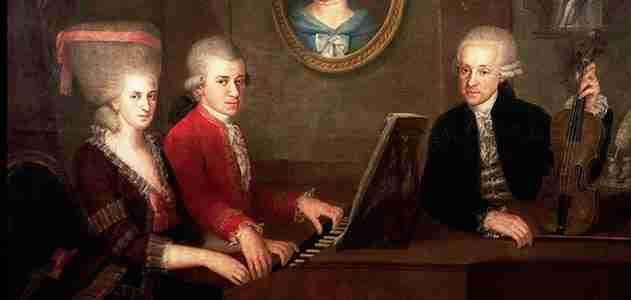
“Virtuosic.” “A prodigy.” “Genius.” These words were written in the 1760s about Mozart—Maria Anna Mozart. When she toured Europe as a pianist, young Maria Anna wowed audiences in Munich, Vienna, Paris, London, the Hague, Germany and Switzerland. “My little girl plays the most difficult works which we have … with incredible precision and so excellently,” her father, Leopold, wrote in a letter in 1764. “What it all amounts to is this, that my little girl, although she is only 12 years old, is one of the most skillful players in Europe.”
The young virtuoso, nicknamed Nannerl, was quickly overshadowed by her brother, Wolfgang Amadeus Mozart, five years her junior. But as one of Wolfgang’s earliest musical role models, does history owe her some measure of credit for his genius?
“That’s a very interesting question,” says Eva Rieger, retired professor of music history at the University of Bremen and author of the German-language biography Nannerl Mozart: Life of an Artist in the 1800s . “I’ve never really considered that possibility, and I don’t know of anyone who has before.”
Such a suggestion may seem far-fetched to Mozart fans and scholars. “To answer the question of how much Nannerl influenced Wolfgang musically, I would say not at all,” says Cliff Eisen, professor of music at King’s College in London and editor of the Cambridge Mozart Encyclopedia . “I’m not sure there is evidence that the dynamic was in any way exceptional beyond what you might think between one relatively talented musician and one who far outshines the other.”
Not so fast, say other scholars. “No musicians develop their art in a vacuum,” according to Stevan Jackson, a musical sociologist and anthropologist at Radford University in Radford, Virginia. “Musicians learn by watching other musicians, by being an apprentice, formally or informally.” Being in a musical family with a musical sibling, in particular, can heighten one’s musical interest, expertise and musical drive, Jackson says.
Leopold Mozart, a court musician, began teaching Maria Anna, his first-born child, to play harpsichord when she was 8 years old. She progressed quickly, with 3-year-old Wolfgang often at her side. After a few years, Wolfgang tried to play sections from Maria’s music book. “Over time, Nannerl’s playing became more and more brilliant, her technique perfect,” Rieger says. “Young Wolfgang was probably impressed by that and inspired to play.”
Wolfgang’s early forays into music-making took his father by surprise. “‘This minuet and trio were learned by Wolfgang in half an hour, at half-past nine at night on the 26th of January 1761, one day before his fifth birthday,’” Leopold jotted in Nannerl’s music book, according to Maynard Solomon’s Mozart: A Life . Because of Wolfgang’s apparent aptitude, Leopold soon launched his son’s music education instead of waiting until the boy was 8.
Those three years could have made a real difference in Wolfgang’s brain development, says Gottfried Schlaug, director of the Music and Neuroimaging Laboratory at Harvard Medical School. He and his colleagues have found remarkable differences between the brains of professional musicians and nonmusicians; the most pronounced differences showed up in musicians who began their training before age 7. “An early start seems to rewire the brain more dramatically,” Schlaug says.
Wolfgang’s early musical start also had the benefit of two teachers, his father and his sister. “Nannerl was of an age where she understood and was more aware of what her father was doing,” says Noel Zahler, director of the School of Music at Carnegie Mellon University. “Nannerl probably interpreted for Wolfgang and reinforced for Wolfgang what Leopold was trying to teach. She showed him that music is not only fun, but a way to communicate without words.”
That education continued as the children began performing together. In 1762, Maria, 11, and Wolfgang, 6, traveled to Munich to play for Elector Maximilian III. “The little child from Salzburg and his sister played the harpsichord,” Count Karl von Zinzendorf wrote in his diary, which is cited in Otto Erich Deutsch’s Mozart: A Documentary Biography . “The poor little fellow plays marvelously. He is a child of spirit, lively, charming. His sister’s playing is masterly, and he applauded her.”
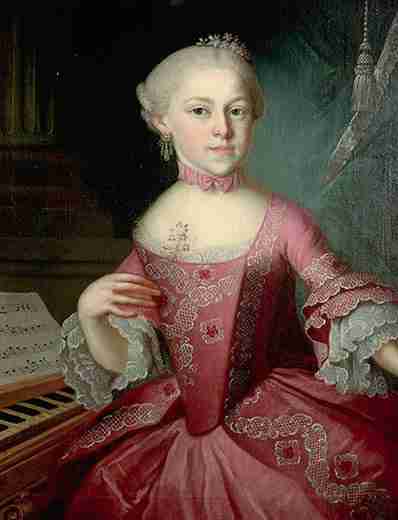
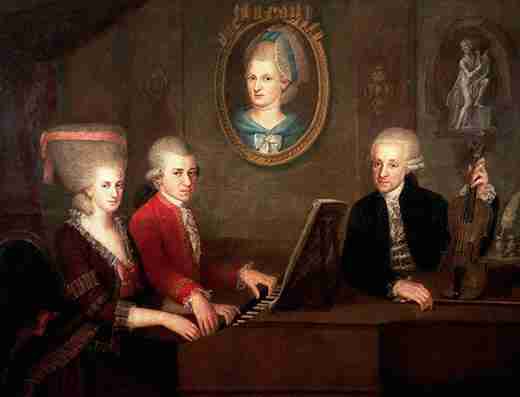
Being paired with a skilled musician on stage can be an intense and transforming experience. “Whether Wolfgang wanted to please his older sister or outshine her, her musical accomplishments may have driven him harder than perhaps he would have on his own,” Jackson says.
Maria and Wolfgang toured for more than three years, covering several thousand miles by horse-drawn carriage, stopping in 88 cities and performing for many thousands of people. “This might be conjecture, but I have to think that Nannerl had an enormous influence on Wolfgang during the tours, especially the early tours,” says Zahler. “Touring intensifies the performing relationship. At a certain point, the music becomes second nature and musicians begin to concentrate almost entirely on deepening the interpretation. Being older, Nannerl would have had deep insights to share.”
While on tour outside London in 1764, Leopold fell ill. Their mother told Wolfgang and his sister that they must be quiet; they couldn’t even play their instruments. Maria Anna gathered some parchment and a quill pen and wrote down Wolfgang’s first symphony (K. 16). Decades later she recalled the incident, remembering that he had said: “Remind me to give something good to the horns!”
Only a fly on the wall would be able to tell for sure whether Maria Anna merely took dictation or collaborated on the piece. Composing a symphony is certainly a challenging and complex undertaking. As a trusted friend, family member and intimate music-making partner, Nannerl could have been exactly what Wolfgang needed to make the leap from sonatas to symphonies, Zahler says. “They probably had lots of discussion about what he was doing,” he says. “I’ll bet she not only reminded him about the horns but also suggested some things for the horns and for other parts of the composition as well.”
Just how far Maria Anna could have gone as a musician, we’ll never know. In 1769, when she was 18 years old and eligible to marry, her father ended her days on the road. While he and Wolfgang toured Italy, Maria stayed behind in Salzburg. She did not marry until 1784; in the meantime, she composed music. Wolfgang wrote from Rome in 1770: “My dear sister! I am in awe that you can compose so well, in a word, the song you wrote is beautiful.”
But we’ll never know what her composition sounds like, for it has been lost.
Elizabeth Rusch is the author of the children’s book For the Love of Music: The Remarkable Story of Maria Anna Mozart (Random House), the first nonfiction book about Maria Anna published in English.
Samuel Morse’s Other Masterpiece
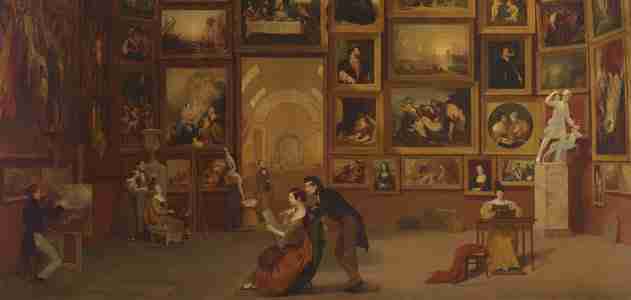
On May 24, 1844, Samuel F. B. Morse wowed the American public when he sent the biblical message “What hath God wrought?” by telegraph, from the Supreme Court room in the U.S. Capitol in Washington, D.C. to Baltimore. Seventeen years later, telegraph lines spanned the entire country. Then, by 1866, a cable was laid across the Atlantic Ocean. But lesser known is Morse’s earlier attempt at connecting North America and Europe—through his art, in a painting called Gallery of the Louvre .
Before Morse was an inventor, he was an artist. A Massachusetts native, he graduated from Yale in 1810 and went on to study art, first in Boston under the painter Washington Allston and then in London at the Royal Academy of Arts. He received some acclaim for an 8- by 6-foot painting called Dying Hercules , depicting the muscular mythical hero, back arched and hand grasping the poisoned robe that killed him. But when Morse returned to the United States in 1815, Americans did not have a taste for such large history paintings. He considered Americans’ taste, actually, to be quite unrefined. At the time, there were few art museums in the country. (The Metropolitan Museum of Art wouldn’t open until 1872 and the Philadelphia Museum of Art in 1876.) And, since most Americans did not travel to Europe, their exposure to art by Old Master painters, such as Titian, Rubens, da Vinci and Veronese, was limited to hack copies.
According to Paul Staiti, an art professor at Mount Holyoke College, Morse took it upon himself to solve this problem. The artist made it his agenda, in the 1820s and ‘’30s, to elevate Americans’ understanding and appreciation for art. He helped found the National Academy of Design in New York City, devoted to educating artists, and lectured on how painting was a fine art on par with architecture, landscape gardening, poetry and music. But Gallery of the Louvre was perhaps his most grandiose “instrument of instruction,” as Staiti once called it.
The massive, 6- by 9-foot painting depicts 38 works, including da Vinci’s Mona Lisa and Veronese’s Wedding Feast at Cana , by 28 European painters from the 16th to 18th centuries, all hung in the Salon Carré, a famous hall in the Louvre. Gallery of the Louvre is considered an example of the Kunstkammer tradition of paintings, which shows people studying a collection of artwork hanging in a known architectural space. It is suspected that Morse would have been familiar with the German painter Johann Zoffany’s The Tribuna of the Uffizi , from the 1770s, in which art connoisseurs and diplomats are shown admiring works by Raphael, Reni, Rubens, Titian and others, in the Tribuna room of the Uffizi in Florence.
Since the Salon Carré was filled with French contemporary paintings when Morse was at the Louvre in 1831 and 1832, he would have “reinstalled” canonical masterpieces from other halls of the museum onto his canvas. His idea was to gather paintings that demonstrated what great art was and that offered important lessons should art students study and copy them. “By presenting Americans with a dazzling showcase of great art he would be doing in miniature what a domestic art museum, were there one, should do,” writes Staiti in his essay “Samuel F. B. Morse and the Search for the Grand Style.” In the foreground of Gallery of the Louvre , a figure, known to be Morse, looks over the shoulder of his daughter, Susan Walker Morse, who is sketching. Writer James Fenimore Cooper is in the left corner of the painting with his daughter and wife, and, in the front left, Morse’s colleague Richard Habersham, brush in hand, is copying a landscape.
The painting fell short of Morse’s intentions though. He showed it in New York City and New Haven, Connecticut, with little fanfare. Many attribute the public’s disinterest to the painting’s lack of narrative. American playwright and actor William Dunlap called the painting “caviar,” in that it appealed to artists and intellectuals, who understood its purpose, but did not whet the less discerning appetite of the masses.
George Hyde Clark, a relative of Cooper’s, purchased the painting in 1834 for $1,300, about half of Morse’s asking price. It reportedly was passed through a few family hands and, in the 1880s, wound up at Syracuse University, where it stayed for nearly a century. In 1982, the Chicago-based Terra Foundation for American Art bought Gallery of the Louvre for $3.25 million, the highest sum paid up until that point for a work by an American painter.
On loan from the Terra Foundation, Gallery of the Louvre is now on display at the National Gallery of Art in Washington, D.C., through July 8, 2012. The exhibition, “A New Look: Samuel F. B. Morse’s Gallery of the Louvre ,” previously on view at Yale University Art Gallery, marks the first time the painting has been shown since it underwent a six-month conservation treatment, beginning last summer.
Independent conservators Lance Mayer and Gay Myers, based in New London, Connecticut, set their sights on better understanding how Morse created his composition and on correcting any damage. Tiny pinholes found in the four corners of Christ Carrying the Cross , attributed to Veronese and hanging just above the figure of Morse, suggest that perhaps Morse pinned a sketch there in trying to piece the puzzle of interlocking paintings together. The Terra Foundation actually owns the only known preliminary study done for the painting—a small, 8- by 10-inch panel copy of Titian’s Portrait of Francis I, King of France . Peter John Brownlee, associate curator at the Terra Foundation, believes that as Morse’s deadline approached (in 1832, the Louvre closed for an August holiday), he switched gears though, setting up a tall scaffold beside the originals, which he copied directly on to his large canvas.
To look into how they might reduce the painting’s yellowish tint, the conservators took some pigment samples, or microscopic flecks of the paint layer, and found that Morse had mixed varnish into his oil paints. “There are a couple of reasons for doing this,” says Brownlee. “One is very practical. Varnish helps your pigments dry faster. But it is also used to recreate the aged, weathered, sometimes dark, historiated look of the Old Master paintings.” Morse’s experimental technique, which some say alludes to his second career as an inventor, made it impossible for the conservators to use a solvent to remove the varnish as there was no way to do so without removing the paint as well. Instead, they removed a thin layer of grime and fixed the botched efforts of previous treatments. The 17th century French painter Claude Lorrain’s Sunset at the Harbor , hanging center right, for example, had been over-cleaned in the past. Its brightness made it look more like a sunrise than a sunset, so Mayer and Myers toned it back. “Overall, you have what I call a more legible, readable picture,” says Brownlee.
Brownlee’s curatorial interest is in why Morse “reinstalled” the paintings he did, in the arrangement he did, in Gallery of the Louvre . He surmises that Morse’s selections were influenced by the tastes of both his teachers and his patrons. “This is the more speculative guess, but I am working on making the connection that he arranged these pictures because of the artistic lessons they provide, both individually and in relation to one another,” says Brownlee. As we stand in front of the painting, in the National Gallery of Art’s West Building, the curator points out how pathways emerge for the viewer’s eye to follow. Francis I, who established the Louvre as a museum, gazes over at the gentleman in Flemish painter Van Dyck’s Portrait of a Man in Black . A pattern of light falls across the painting on a downward diagonal. And, in the bottom row of paintings, to the right of the doorway leading into the museum’s Grande Galerie, are two versions of Christ Carrying the Cross , one by a French painter and the other by an Italian. Brownlee suspects Morse put the two similar paintings close together so that their differences could be better seen and discussed.
“You start to think about gradation of colors, contrast, the relationship of part and whole, and suddenly this becomes the illustration of the points he is making in his lectures,” says Brownlee. It was in the mid-1830s, explains Brownlee, that Morse became a professor of painting at New York University. However, at this time he sold Gallery of the Louvre .
“It seems to me that this would be the thing that he’d want in his lecture hall,” says Brownlee. “So that is the real mystery to me.”
Synergies

The German naturalist Alexander von Humboldt (1769-1859) was called the “last universal man”—a person who had a grasp of all the world’s knowledge. A stretch then, and impossible today. Our age has seen an explosion of experts in hundreds of disciplines, all creating huge amounts of specialized knowledge, which ricochets instantaneously around the world over the Internet. Not even von Humboldt could make sense of it all.
Which is why the Smithsonian’s new strategic plan takes a cross-disciplinary approach to four Grand Challenges: unlocking the mysteries of the universe, understanding and sustaining a biodiverse planet, valuing world cultures, and understanding the American experience. We have established four corresponding Smithsonian Consortia to organize and energize interdisciplinary efforts and to stimulate intellectual exchange within the Institution and beyond. And we have appointed four outstanding scholars as Consortia directors; they now devote half of their time to their consortium, and half to their specialization at the Smithsonian—be it astrophysics, tropical biology, museum archives or photography collections. The Consortia draw from various fields to advance research and provide core content to exhibitions, curricula and public programs. Thanks to a $10 million grant from the Bill & Melinda Gates Foundation, 31 projects have already been funded. (See sidu/consortia .)
One such collaborative effort, the Immigration Initiative, will explore the importance of immigration and migration in American history. It will use Smithsonian resources to help Americans contemplate their own experiences—and thereby better appreciate the wider history and culture of our nation. The Immigration Initiative will culminate in a presentation at the 2015 Smithsonian Folklife Festival and an exhibition at the National Museum of American History the following year. Another project, the Marine Global Earth Observatories, will draw on the Institution’s marine science resources to establish several coastal sites for long-term monitoring of marine life and to collect data on changes in biodiversity. The Smithsonian Astrophysical Observatory, the National Air and Space Museum, and the Smithsonian Institution Traveling Exhibition Service will create an exhibition—for use by universities and colleges—showcasing discoveries such as black holes and dark energy. A program called Race: A Pan-Institutional Collaboration will explore the themes of race, diversity and identity.
Moving forward, we will seek out like-minded partners at universities, nonprofit organizations and government agencies willing to tackle high-risk/high-return problems. I am confident that collaborations such as these will reinvigorate the Smithsonian and allow us to better serve all those who look to us for knowledge and understanding.
G. Wayne Clough is Secretary of the Smithsonian Institution



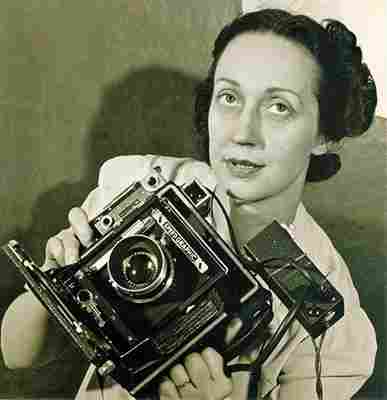

Post a Comment